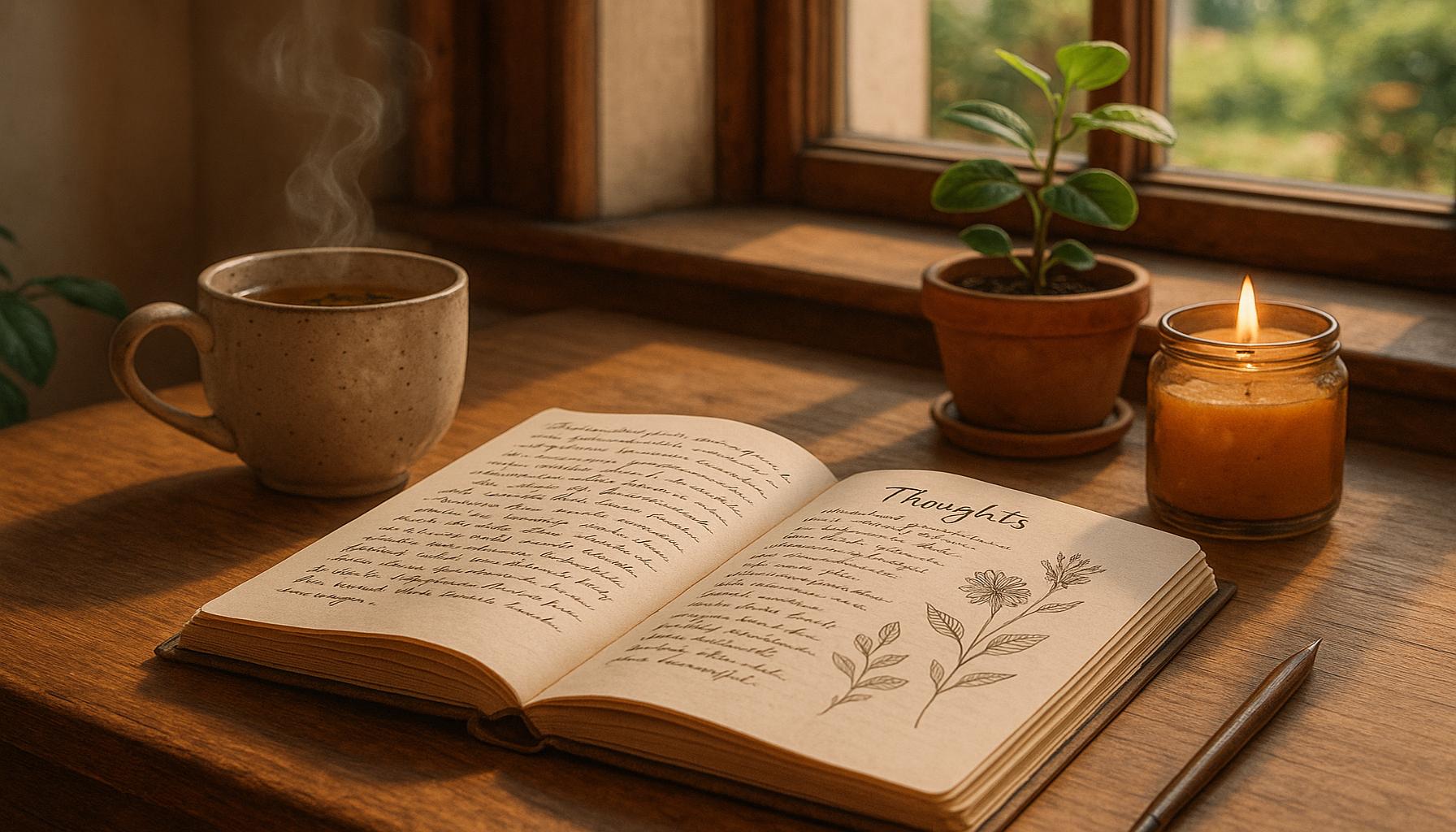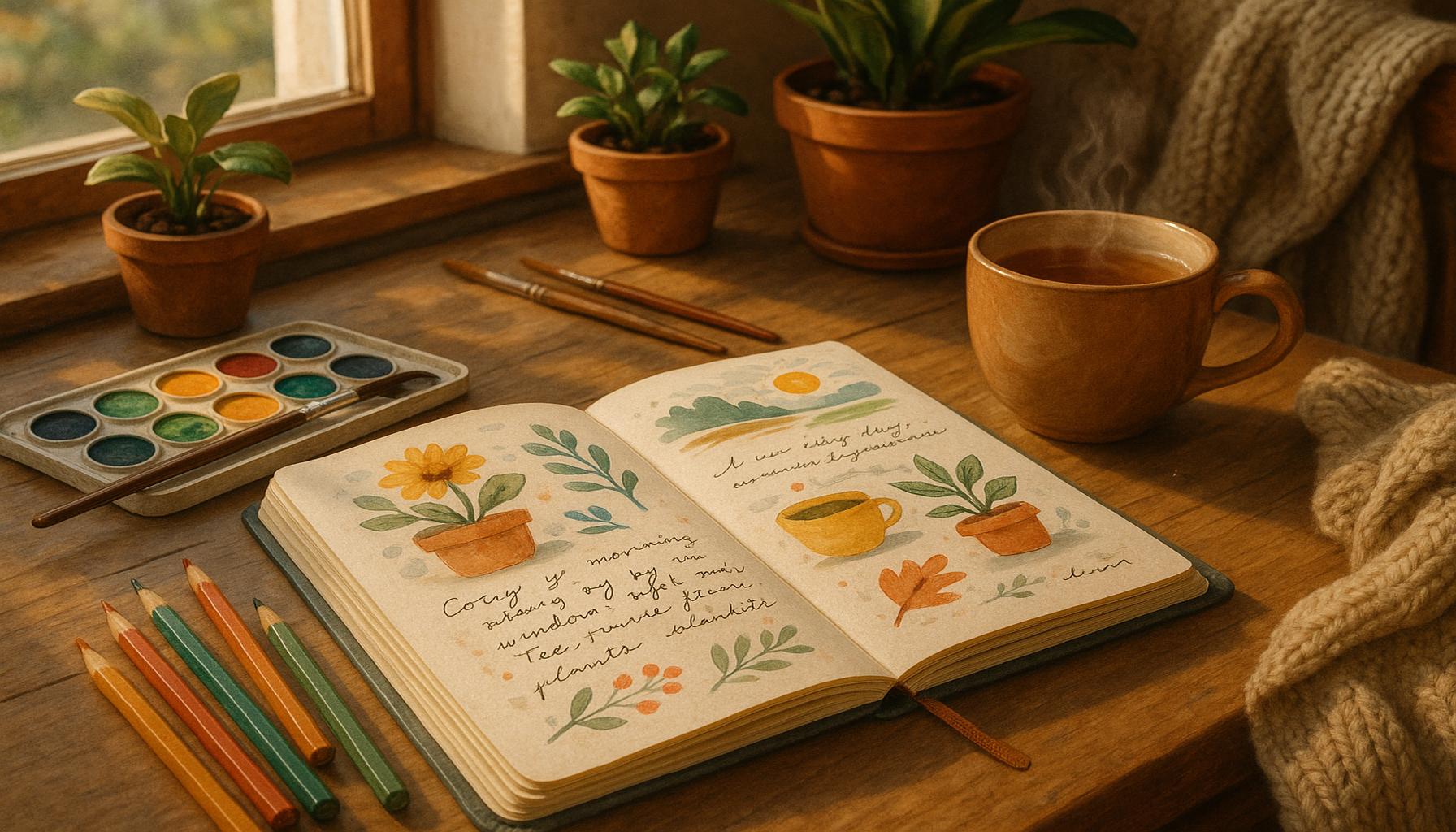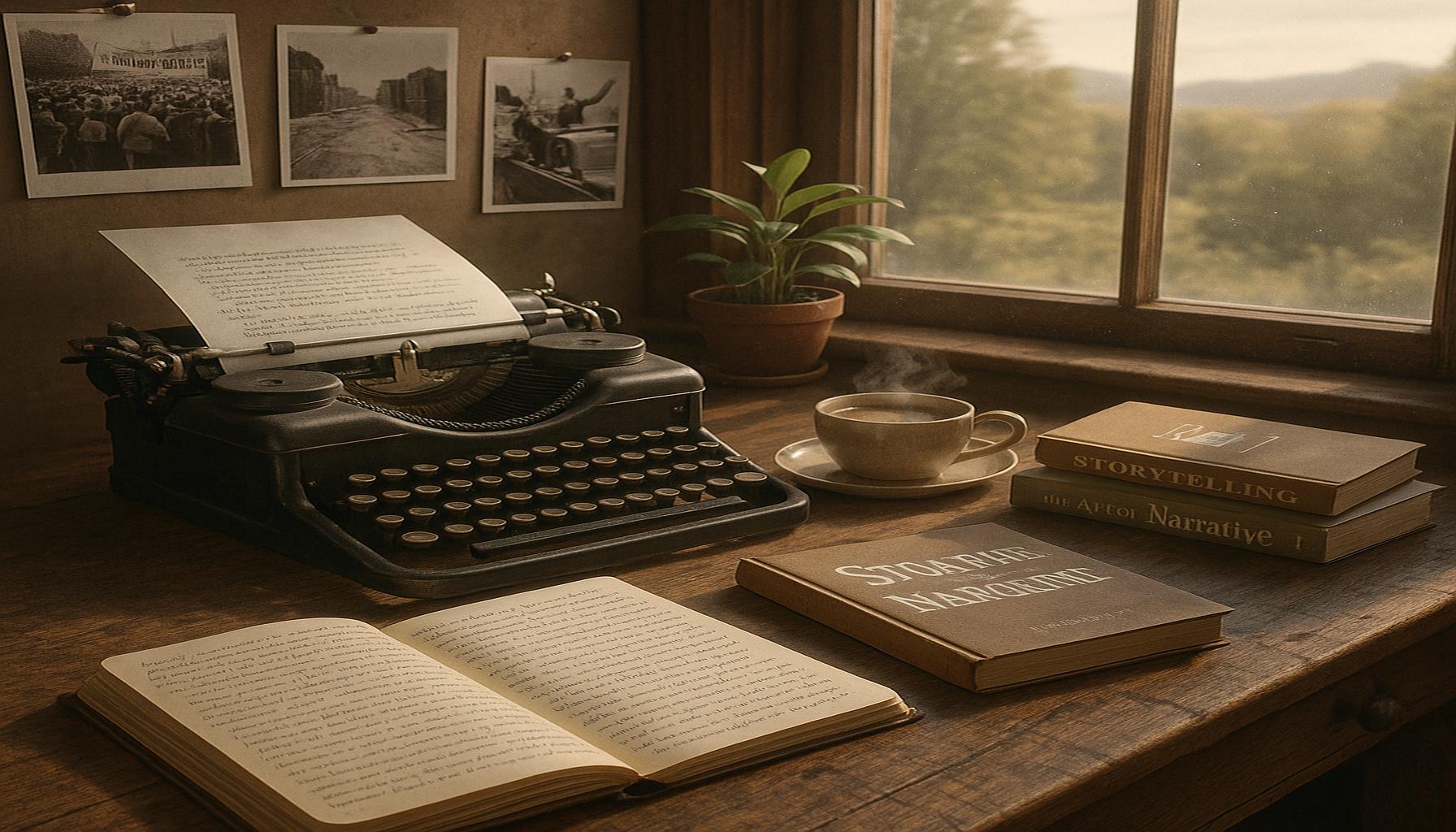Writing as Therapy: Releasing Emotions Through the Diary

The Transformative Impact of Journaling
In an era characterized by rapid change and constant pressure, many individuals are seeking outlets for their emotions, with journaling emerging as a particularly effective method. The simple act of putting pen to paper not only serves as an emotional release but also fosters a deeper understanding of one’s self. For those navigating turbulent times, such as the loss of a loved one or significant life transitions, a diary can become a trusted companion, providing solace and clarity amid chaos.
Delving into the key benefits of writing as therapy reveals its profound ability to enhance psychological well-being:
- Emotional Clarity: Engaging in journaling encourages you to explore and articulate your feelings thoughtfully. This process may involve detailing daily stresses or expressing gratitude for positive experiences, leading to a more profound comprehension of your emotional landscape.
- Stress Reduction: Scientific studies have shown that journaling can lower levels of the stress hormone cortisol, helping individuals to experience diminished anxiety and promote a state of relaxation. Activities such as writing about worries in a specific format can effectively distance you from them.
- Self-Discovery: Reflective writing invites you to confront your beliefs, values, and motivations. This exploration often catalyzes a journey toward heightened self-awareness, allowing for personal growth and evolution over time.
Empirical research reinforces the notion that expressive writing can significantly impact mental well-being. For instance, studies have found that:
- Enhance Mood: Participants who engaged in regular journaling reported improved mood and emotional regulation, leading to a more positive outlook on life. It can be especially beneficial in combating feelings of loneliness and depression.
- Boost Creativity: Through the exploration of thoughts and experiences, journaling can unleash creative potentials that may have previously been inaccessible. Many notable authors, including Virginia Woolf and Anaïs Nin, have credited their diaries with unlocking new narrative inspiration.
- Facilitate Healing: Writing provides a safe space to process trauma and navigate difficult experiences. Techniques such as writing about distressing incidents can help individuals reframe their narratives, leading to emotional closure.
In the United States, where there is a growing emphasis on mental health awareness, more people are embracing journaling as a therapeutic tool. Various methods such as bullet journaling, gratitude journaling, or using guided prompts allow individuals to tailor their writing experiences to their unique needs. Whether chronicling daily moments or unpacking profound emotional struggles, the ritual of journaling promises to provide a unique and personal approach to healing.
As you embark on your own journaling journey, consider setting aside a few minutes each day to reflect and write. You may discover that this simple practice not only transforms your understanding of self but also serves as a powerful mechanism for navigating the complexities of life.
DIVE DEEPER: Click here to explore the evolution of digital art
The Therapeutic Process of Journaling
Writing as therapy, particularly through diary entries, can serve as a powerful conduit for emotional expression. Individuals often find that the very act of journaling allows them to step outside of their thoughts and observe their feelings from a new perspective. This process helps to clarify emotions, making it easier not just to express them, but also to understand their underlying causes. Many people have experienced the relief that comes from articulating their feelings on paper, which can be especially beneficial during overwhelming times.
When one engages in this form of self-reflection, it may lead to several essential outcomes:
- Emotional Release: Writing can serve as an emotional valve, allowing pent-up feelings to escape. Many find that once they start writing, their thoughts flow more freely, often leading to unexpected insights and realizations.
- Increased Mindfulness: Regular journaling encourages practitioners to be present and intentional with their thoughts. This mindfulness can act as an anchor, bringing attention to the current moment and alleviating the weight of past regrets or future anxieties.
- Organization of Thoughts: As individuals write, they can often organize their thoughts more coherently. This can lead to a better understanding of complex emotions and situations, allowing for more constructive problem-solving.
Numerous studies validate the efficacy of using writing as an emotional outlet. One significant study published in the journal *Psychological Science* indicated that individuals who wrote about their thoughts and feelings following traumatic experiences demonstrated marked improvements in physical health and emotional well-being. This form of expressive writing led participants to reduce their symptoms of anxiety and depression significantly.
Moreover, the adaptability of journaling means it can be tailored to fit various preferences and lifestyles. From traditional narrative entries to bullet journaling that blends art and planning, individuals can choose a style that resonates with their personal journey. This flexibility makes journaling accessible to a broad audience, regardless of one’s writing skills or emotional context.
For those contemplating starting their journaling practice, it can be beneficial to consider specific techniques or prompts that may resonate. Here are a few that have gained popularity among practitioners of writing as therapy:
- Gratitude Journaling: Writing down things you are thankful for each day can shift your focus to positive aspects of your life, helping foster a sense of appreciation and joy.
- Stream of Consciousness: Allowing thoughts to flow onto the page without censorship can unlock deeper emotional truths. This method encourages freedom of expression without the pressure of structure.
- Prompted Journaling: Using specific prompts, such as “What made me smile today?” or “What challenges did I face this week?” can guide entries and encourage more profound self-reflection.
In essence, writing serves as a mirror, reflecting our innermost thoughts and emotions back to us. It is through this reflective process that we can unlock the door to understanding ourselves better and, ultimately, finding healing.
| Advantage | Description |
|---|---|
| Cathartic Expression | Writing allows individuals to express their feelings and emotions freely, providing a necessary release that can be therapeutic. |
| Enhanced Self-Awareness | Maintaining a diary encourages introspection, helping writers to understand their thoughts, emotions, and behavioral patterns better. |
| Stress Reduction | Recording thoughts can significantly lower anxiety levels, as it acts as a form of mental decluttering. |
| Creativity Boost | Journaling can tap into the creative side of the brain, allowing for exploration in various writing styles and ideas. |
The practice of “Writing as Therapy: Releasing Emotions Through the Diary” not only offers avenues for cathartic expression but also fosters a deeper connection with one’s self. Engaging in this form of writing acts as a sanctuary where one can freely express a spectrum of emotions—from joy to sorrow—without judgment. This form of expression has been strongly linked with improved mental well-being.Furthermore, introspective writing enhances self-awareness, empowering individuals to scrutinize and understand their emotional triggers. With every entry, writers can uncover patterns that illuminate their reactions and decisions, ultimately leading to personal growth.In today’s fast-paced world, stress management becomes vital. Journal writing serves as a unique antidote to anxiety, allowing the mind to unload its burdens and reflect on daily challenges. Simultaneously, it offers a fertile ground for nurturing creativity, inspiring individuals to explore thoughts and ideas that may otherwise remain unexpressed. As such, the therapeutic landscape of journaling creates a holistic approach to mental and emotional well-being.
DIVE DEEPER: Click here to discover vibrant watercolor techniques
Exploring Different Journaling Techniques
The versatility of journaling as a therapeutic tool lies in the myriad of techniques one can adopt. While traditional diary entries are popular, exploring additional styles can enhance one’s emotional exploration and expression. Each technique serves to unveil new dimensions of self-awareness, offering individuals distinct ways to engage with their thoughts and feelings.
One highly regarded method is art journaling. This approach merges visual art with written expression, allowing individuals to doodle, sketch, or paint alongside their written reflections. For many, this creative outlet can bypass traditional barriers associated with writing, offering an alternative means of emotional release. Art journaling fosters a non-linear approach to emotions, where visuals can often convey sentiments that words fail to capture. A study published in the *American Journal of Public Health* highlighted that art therapy, including art journaling,can significantly reduce symptoms of anxiety and depression while increasing self-esteem.
Another compelling technique is dialogue journaling, where individuals write conversations between themselves and different aspects of their inner selves (e.g., their inner critic or their optimistic side). This practice can facilitate a deeper understanding of internal conflicts and emotional struggles. It encourages self-compassion and can illuminate pathways toward reconciliation between contradictory feelings. Studies in narrative therapy suggest that such dialogues can enhance emotional regulation and lead to healthier coping mechanisms.
For some, bullet journaling has gained traction as a structured yet creative journaling style. This diary format enables users to combine to-do lists, habit tracking, and reflections all in one place. By providing an organized framework, bullet journaling can alleviate feelings of overwhelm commonly associated with chaos in daily life. According to research conducted at the University of Florida, organizing thoughts visually has been shown to keep stress at bay and enhance productivity. The method provides clarity of thought, helping individuals recognize patterns and track emotional changes over time.
Another promising avenue in the realm of journaling is digital journaling. With the rise of technology, applications have emerged that provide users with various features such as prompts, mood tracking, and multimedia capabilities (like voice recordings or photos). This modern twist not only makes journaling more accessible, especially for those who prefer typing over handwriting, but also integrates easily into busy lifestyles. A survey by the Pew Research Center indicated that a majority of Americans, particularly younger generations, prefer written communication through digital platforms, affirming that digital journaling can resonate with today’s tech-savvy individuals.
Additionally, engaging in mindfulness journaling helps intertwine writing with mindfulness practices. By focusing on the present moment and observing thoughts without judgment, individuals can cultivate awareness and acceptance of emotions as they come. Mindfulness meditation, when paired with writing, creates a space for gentle self-exploration, guiding individuals to reflect on their experiences and emotions with kindness. Research published in *Mindfulness* journal has shown that mindfulness practices significantly reduce emotional distress and enhance psychological well-being.
Incorporating these diverse techniques into a writing practice can deepen the emotional connection and provide unique perspectives on personal experiences. By exploring different journaling methods, individuals can customize their therapeutic journey, creating a profound space for healing and growth.
DIVE DEEPER: Click here to discover the role of improvisation in enhancing your musical creativity</
Conclusion
In closing, the practice of journaling has emerged as a powerful therapeutic tool that transcends traditional boundaries of self-expression. Through various methods—whether it be art journaling, dialogue journaling, bullet journaling, or digital and mindfulness journaling—individuals can tailor their writing practices to meet their emotional needs. This flexibility enables the exploration of emotions in ways that resonate uniquely with each person, paving the path toward greater self-understanding and healing.
As studies continue to unveil the mental health benefits associated with different journaling techniques, it is evident that writing serves not only as a means of diary-keeping but also as a profound catalyst for emotional release. Research has shown that journaling can enhance emotional regulation, reduce anxiety and depression, and bolster self-esteem, making it a valuable ally in today’s fast-paced world.
Moreover, the accessibility of journaling, especially in the digital age, opens the door for more people to engage in this therapeutic journey. Many find that the simplicity of capturing their thoughts offers clarity amidst the complexities of life, helping them navigate their emotional landscapes with greater ease.
Ultimately, embarking on your own journaling journey may just provide the space you need to process your emotions and reflect on your experiences. So, whether you choose to put pen to paper in a traditional diary format or embrace the modern nuances of digital journaling, the key takeaway remains clear: writing can be a vital instrument for emotional well-being. Harnessing the power of words may offer profound insights and lead to healing paths previously unrecognized.



